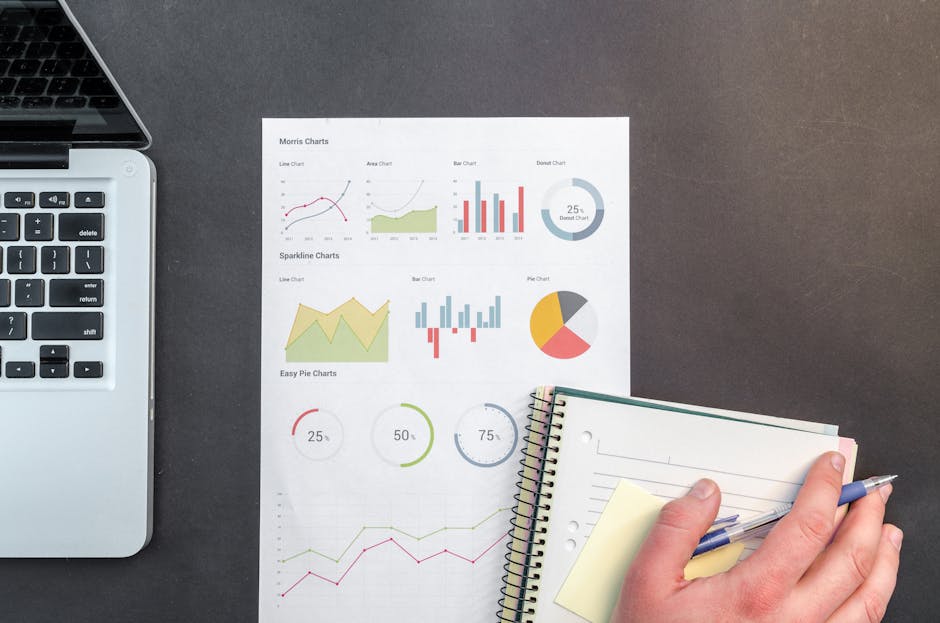Using Data Analytics for Conversion Success
Did you know that businesses using data analytics can boost their conversion rates by up to 30%? it’s true! In a world driven by technology, data holds the key to understanding customer behavior. Lets dive into how data analytics can turn casual visitors into loyal customers.
What is Data Analytics?

Data analytics involves examining raw data to find trends and patterns. Think of it as detective work. Just like detectives use clues to solve mysteries, businesses use data to solve the puzzle of customer preferences.
For example, when an online store tracks how many people look at a product but don’t buy it, they can adjust their approach. This might mean changing product descriptions or offering discounts. The goal is clear: convert interest into sales.
Why is Data Analytics Important for Conversions?

Understanding the importance of data analytics is crucial for any business. Here are some key reasons:
- Informed Decisions: Data helps businesses make choices based on facts, not just gut feelings.
- Targeted Marketing: Companies can tailor their messages to specific groups of people, making promotions more effective.
- Improved User Experience: Analytics can reveal what customers like and dislike, allowing businesses to enhance their websites and offers.
When you know your customers better, you can serve them better. And happy customers often turn into repeat buyers.
How Can You Use Data Analytics to Boost Conversions?

Now that we see the importance of data analytics, lets explore how to use it effectively to increase conversions.
1. Analyze Customer Behavior
Understanding how customers interact with your site is the first step. Tools like Google Analytics can show you:
- Which pages are the most popular
- How long visitors stay on your site
- Where users drop off in the purchasing process
This information is gold. For instance, if many people leave your site on the checkout page, it might indicate a problem. Maybe the process is too complicated, or shipping costs are too high.
2. Identify Trends and Patterns
Look for trends over time. Are more people buying during certain seasons? Do some products sell better on weekends? Finding patterns helps you plan promotions and inventory wisely.
For example, if you notice that sales of a specific item spike in December, you can prepare early. Stock up, create ads, and get ready for holiday shoppers.
3. Segment Your Audience
Not all customers are the same. Segmenting your audience means dividing them into groups based on shared characteristics. This can be demographics, interests, or buying behavior.
By targeting specific segments, you can craft personalized marketing messages. For instance:
- Send special offers to loyal customers.
- Target new visitors with welcome discounts.
- Create content for specific customer interests, like eco-friendly products.
Personalization can significantly increase conversion rates. In fact, 80% of consumers are more likely to make a purchase when brands offer personalized experiences.
What Tools Can Help with Data Analytics?

There are many tools available for data analytics that can help businesses. Here are a few popular ones:
- Google Analytics: A free tool that provides insights into website traffic and user behavior.
- HubSpot: Offers comprehensive marketing analytics, including email performance and lead tracking.
- Tableau: A data visualization tool that helps turn complex data into easy-to-understand visuals.
Choosing the right tool depends on your business needs. don’t hesitate to explore a few options to see which one fits best.
How Can You Measure Conversion Success?
Tracking your success is vital for continuous improvement. Here are some common ways to measure conversion success:
- Conversion Rate: This is the percentage of visitors who complete a desired action, like making a purchase. Higher rates indicate effective strategies.
- Customer Acquisition Cost (CAC): This measures how much you spend to acquire a new customer. Lowering CAC while increasing conversions is a win!
- Return on Investment (ROI): Calculate how much you earn from your marketing efforts compared to how much you spend.
Regularly reviewing these metrics helps you adjust your tactics as needed. If something isn’t working, don’t be afraid to change it!
Common Misconceptions About Data Analytics
Many people have misconceptions about data analytics. Lets clear a few up:
Is Data Analytics Only for Big Businesses?
Not at all! While larger companies may have more resources, small businesses can benefit greatly from data analytics, too. Many affordable tools cater specifically to small business needs.
Do I Need to be a Data Scientist?
While having a data scientist can help, you don’t need to be one to use data analytics effectively. Many tools offer user-friendly interfaces and tutorials that make it easy for anyone to get started.
Is More Data Always Better?
Not necessarily. it’s important to focus on quality over quantity. Having the right data that answers specific questions is more valuable than drowning in irrelevant information.
What Are Some Real-World Examples of Data Analytics Success?
Many companies have achieved success through data analytics. Here are a few notable examples:
- Amazon: This giant uses data to recommend products based on past purchases. This strategy keeps customers engaged and increases sales.
- Netflix: By analyzing viewer preferences, Netflix creates personalized content suggestions, which keeps viewers watching longer.
- Airbnb: They analyze data to set optimal pricing for listings, ensuring hosts can maximize their earnings while attracting guests.
These companies show that when you leverage data effectively, the results can be impressive.
Final Thoughts: Actionable Takeaways
Data analytics can be a game-changer for businesses looking to improve their conversion rates. Here are some actionable takeaways to consider:
- Start by analyzing customer behavior on your website.
- Segment your audience to create personalized marketing strategies.
- Choose the right analytics tools that fit your business needs.
- Regularly measure your conversion success and adjust as needed.
Remember, the goal is to understand your customers better and serve them well. With the right data analytics strategy, you can turn visitors into loyal customers.
For more tips on improving your business strategy, be sure to check out our post on Improving Customer Engagement.
Ready to boost your conversion success? Start using data analytics today!

